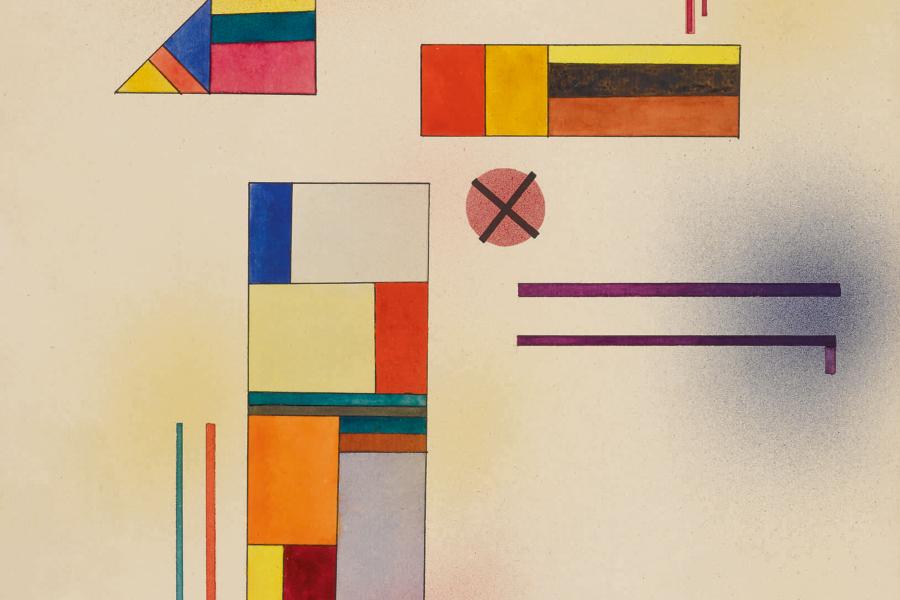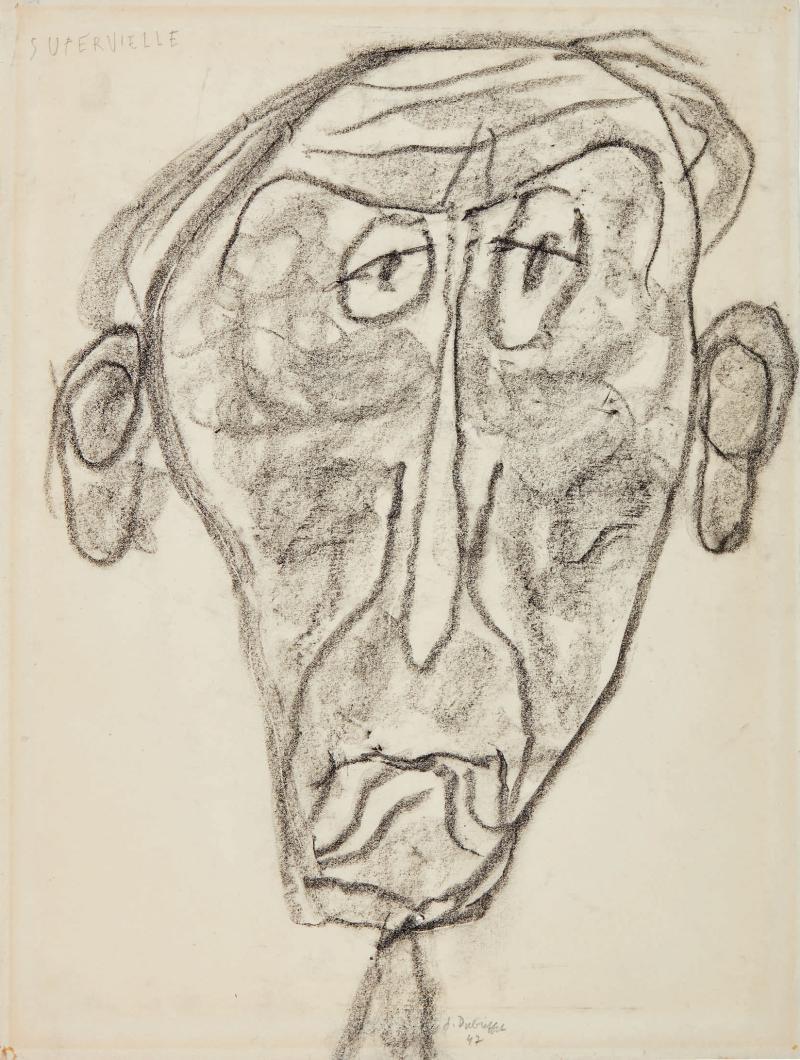Beginning with Sotheby’s November Auctions ofImpressionist & Modern and Contemporary Art,And Continuing Through 2020 & Beyond
Showcasing the Work of 19th and 20th Century Masters, Including:Jean Dubuffet | Joan Miró | Wassily Kandinsky…
 Kandinsky, Hartweich (Hard Soft), No. 390 - Mit freundlicher Genehmigung von: sothebys.com
Kandinsky, Hartweich (Hard Soft), No. 390 - Mit freundlicher Genehmigung von: sothebys.comBeginning with Sotheby’s November Auctions ofImpressionist & Modern and Contemporary Art,And Continuing Through 2020 & Beyond
Showcasing the Work of 19th and 20th Century Masters, Including:Jean Dubuffet | Joan Miró | Wassily Kandinsky…
Beginning with Sotheby’s November Auctions ofImpressionist & Modern and Contemporary Art,And Continuing Through 2020 & Beyond
Showcasing the Work of 19th and 20th Century Masters, Including:Jean Dubuffet | Joan Miró | Wassily Kandinsky | Claes OldenbergHelen Frankenthaler | George Grosz | & More
Assembled Over 50 Years by the CelebratedPhilanthropist, Businessman and Collector
A Portion of the Proceeds from Foundation Collection Sales toBenefit Harlem Children’s Zone
Public Exhibitions Open 1 November on York Avenue
NEW YORK, 29 October 2019 – Sotheby’s is pleased to announce that works from the William Louis-Dreyfus Foundation and Family Collections will highlight Sotheby’s Impressionist & Modern Art and Contemporary Art Day Auctions in New York this November, and will continue to feature across Sotheby’s global auctions through 2020 and beyond.
Amassed over a period of more than 50 years and spanning time periods and continents, The William Louis-Dreyfus Foundation and Family Collections are a testament to Louis-Dreyfus’s aesthetic intuition, curiosity and passion for collecting on a personal level. The Foundation Collection alone contains more than 3,500 works of art and is housed in a museum-quality space in Mount Kisco, New York.
The Louis-Dreyfus Collections showcase artists with an interest in political commentary and social comedy, such as George Grosz, Honoré Daumier and Raymond Mason, as well as those working in the realm of amorphous and non-representative art, such as Jean Dubuffet, Joan Miró and Wassily Kandinsky. Characterized by its recontextualization of known artists while giving voice to those who were unjustly underrepresented, including a focus on self-taught artists—the William Louis-Dreyfus Foundation and Family Collections stand among the most progressive and wide-ranging in the United States.
ABOUT WILLIAM LOUIS-DREYFUSBorn in 1932 outside Paris to the Frenchman Pierre Louis-Dreyfus and the American-born Dolores Neubauer, who was of Mexican descent, William Louis-Dreyfus fled Nazi-occupied France and moved to the United States, where he attended Duke University in 1954 and later graduated from the university’s law school. Louis-Dreyfus went on to practice law at Dewey Ballantine in New York City, and from 1969 until his retirement in 2006 he was the chief executive officer of the Louis Dreyfus Group, and international organization of diversified companies that had been wholly owned by the Louis-Dreyfus family since its foundation in 1851. Among his accomplishments while leading the company, Louis-Dreyfus transformed the business into one of the leading global commodities trading platforms.
In addition to his passion for collecting art, Louis-Dreyfus was also a published poet and essayist, as well as an avid lover of nature. From 1998 to 2008, he served as chairman of the Poetry Society of America. At his home in Mount Kisco, he planted hundreds of trees and often hosted the public to enjoy the beautiful ground and gardens that for him were a source of inspiration and awe.
An ardent defender of social justice, Louis-Dreyfus supported numerous philanthropic and charitable causes, focused on improving the lives of people of color. In 2013, Louis-Dreyfus established the William Louis-Dreyfus Foundation to educate the public about the importance of art and to increase public awareness of self-taught and emerging artists. A portion of the proceeds from the sale of Foundation works will be donated to the Harlem Children’s Zone, a pioneering nonprofit organization dedicated to ending generational poverty in Harlem.
HIGHLIGHTS FROM THE IMPRESSIONIST & MODERN ART DAY SALEAuction 13 November
The Louis-Dreyfus Collections are highlighted by a comprehensive group of works on paper by Wassily Kandsinky. The works not only exemplify their respective periods, but also epitomize the qualities of expression for which Kandinsky’s oeuvre is celebrated, affording an overview of the artist’s role in the birth of Abstraction and his life-long experimentation with different modes of artistic representation.
Composed of a dynamic combination of geometric and organic forms, Hartweich (Hard Soft), No. 390 (estimate $500/700,000) was created during a time of great significance within Kandinsky’s personal and creative life. During the course of his stay at Bauhaus (1922-1932), Kandinsky's work gradually moved away from the free flowing, irregular lines and shapes of his earlier oeuvre towards a more geometric form of abstraction. His watercolors and paintings of this period are dominated by circles, triangles and straight lines rather than undefined shapes and loosely applied paint. This shift to a more geometric language reflects the influence of Russian Constructivist art, to which he was exposed during the war years spent in Moscow.
When the Bauhaus was shut down officially at the end of 1932, Kandinsky left Germany for Paris. Following his move to the French capital, Kandinsky increasingly came into contact with works by Surrealist artists such as Joan Miró and Jean Arp, and under the influence of their style he moved away from the hard-edged geometrical abstraction that had dominated his oeuvre throughout the 1920s. He found a new, more organic abstract idiom, reflected in the biomorphic shape of the La Forme Blanche (, estimate $400/600,000). Like his contemporaries Klee and Arp, Kandinsky had become interested in nature and organic growth. He began to produce anthropomorphic forms in his paintings which grew from ideas about zoology and embryology. Kandinsky found inspiration in images of embryos and would clip photographs and diagrams from scientific articles on deep-sea life.
Executed in 1941, Etude pour 'Contrastes Réduits' (estimate $400/600,000) is an intricately executed gouache from Kandinsky's mature Parisian period. The radical change in style from the Bauhaus combined with a series of innovative technical and theoretical advances led Kandinsky to produce an extraordinarily exciting and original group of work. The practice of applying vibrant pigment to dark paper, including sheets the artist had prepared himself, began early in his career, and reveals the roots of his artistic training at the height of the Art Nouveau movement in Europe. As with La Forme Blanche, the gentler, more organic forms represented here were almost certainly informed by Kandinsky's interest in molecular biology.
The collection also features an assemblage of works on paper by Honoré Daumier, whose drawings and watercolors depicting French nobility, politicians, magistrates and lawyers are considered among the best caricature and social satire drawings of the 19th century. In addition to their cultural and political significance, Daumier's drawings also demonstrated his unrivalled skill as a draughtsman and his eye for singling out the most expressive physical details of those whom he depicted, as seen in his pen and ink drawings L'Avocat pathetique (The Lawyer) (estimate $100/150,000) and Tetes de deux Hommes (The Heads of Two Men) (estimate 12/18,000).
HIGHLIGHTS FROM THE CONTEMPORARY ART DAY AUCTIONAuction 15 November
Among the highlights of the Collections is Jean Dubuffet’s stunning Portrait of Jules Supervielle (estimate $70/100,000), which comes from a series of portraits by Dubuffet of important Parisian writers and intellectuals. The series was created from the summer of 1946 through the fall of 1947, when it was subsequently exhibited in October 1947 at Galerie Drohin as “People Are Much More Beautiful Than They Think: Long Live Their True Face.” The portraits are characterized by their highly depersonalized and almost caricature-like stylization, which was in part a result of the artist’s unfamiliarity with his subject and an attraction to their features from a strictly aesthetic standpoint. In a letter, Dubuffet described the portrait of poet Supervielle: “The work of this poet does not interest me very much; it is just by chance that I was induced to do his portrait, and this undertaking was not motivated by my having been particularly attracted by his work. However, I have to mention that his physical appearance (he is a tall, lean, stooping devil, whose head—tottering constantly—with the expression of a camel) seemed to lend itself to a portrait which might serve my intentions.”
There are also important early works on paper by Claes Oldenburg on offer, which showcase the artist’s technical skill and imagination that would be realized in his more well-known, large-scale sculptures. Throughout Oldenburg’s career, drawings were an especially important tool to explore new concepts and ideas that he would later develop into his colossal sculptures. He wrote in the early 1970s that “drawings are for me the battleground for my being.” The present series of two drawings, Typewriter Erasers (estimate $30/40,000) and Soft Fans (estimate $30/40,000), depict two of Oldenburg’s most instantly recognizable subjects. The drawings of these mundane, consumer products highlight Oldenburg’s creative process and interest in subverting sculpture’s traditional subject matter and form.
 William Louis-Dreyfus, courtesy of Gloria Baker Photography - Mit freundlicher Genehmigung von: sothebys.com
William Louis-Dreyfus, courtesy of Gloria Baker Photography - Mit freundlicher Genehmigung von: sothebys.comPublic Exhibitions Open 1 November on York Avenue
 Kandinsky, Etude pour 'Contrastes Réduits - Mit freundlicher Genehmigung von: sothebys.com
Kandinsky, Etude pour 'Contrastes Réduits - Mit freundlicher Genehmigung von: sothebys.com 10150, Lot 211, Jean Dubuffet, Portrait of Jules Supervielle - Mit freundlicher Genehmigung von: sothebys.com
10150, Lot 211, Jean Dubuffet, Portrait of Jules Supervielle - Mit freundlicher Genehmigung von: sothebys.com 10150, Lot 212, Claes Oldenburg, Typewritter Erasers - Mit freundlicher Genehmigung von: sothebys.com
10150, Lot 212, Claes Oldenburg, Typewritter Erasers - Mit freundlicher Genehmigung von: sothebys.comCopyright © 2024 findART.cc - All rights reserved
